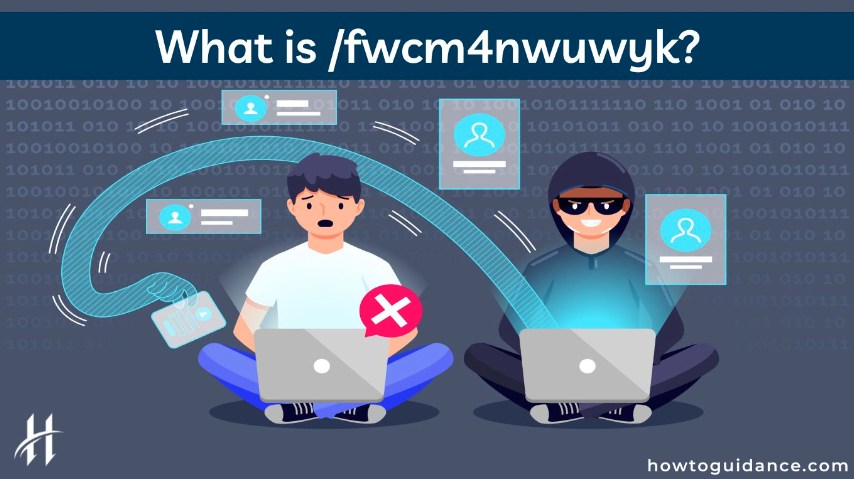In the world of cybersecurity, malware continues to pose a significant threat to individuals, organizations, and even governments. Malware comes in various forms, each with its own unique characteristics and malicious intentions. One such malware that has recently surfaced is ‘/fwcm4nwuwyk.’ In this article, we will delve into the details of this malicious software, exploring its features, potential impact, and ways to protect against it.
Understanding ‘/fwcm4nwuwyk’:
‘/fwcm4nwuwyk’ is a sophisticated malware software that has gained notoriety for its advanced capabilities and stealthy behavior. Its origin and creator remain unknown, making it difficult to attribute the malware to any specific threat actor or group. The software spreads primarily through malicious websites, compromised email attachments, or infected software downloads.
Features and Functionality:
Once ‘/fwcm4nwuwyk’ infects a system, it begins to execute a series of malicious activities. Here are some notable features and functionalities associated with this malware:
1. Stealth and Persistence: ‘/fwcm4nwuwyk’ employs advanced evasion techniques to remain hidden within the target system. It often disguises itself as legitimate system files or processes, making detection and removal challenging.
Additionally, it creates multiple backup copies across the system, ensuring persistence even after initial removal attempts.
2. Data Theft and Espionage: One of the primary objectives of ‘/fwcm4nwuwyk’ is to steal sensitive data from the infected system. This includes personal information, financial records, login credentials, and intellectual property. The malware can also record keystrokes, capture screenshots, and hijack webcams to gather valuable information.
3. Remote Access and Control: ‘/fwcm4nwuwyk’ establishes a covert communication channel with a command and control (C&C) server. This allows the attacker to remotely control the infected system, execute commands, upload additional malware, and perform various malicious activities without the victim’s knowledge.
4. Self-Propagation: ‘/fwcm4nwuwyk’ possesses the ability to replicate and spread itself across a network. It can exploit vulnerabilities in connected systems or leverage stolen credentials to gain unauthorized access to other devices, thereby increasing its reach and impact.
Potential Impact:
The presence of ‘/fwcm4nwuwyk’ on a system can have severe consequences for both individuals and organizations. Here are some potential impacts associated with this malware:
1. Financial Loss: Cybercriminals behind ‘/fwcm4nwuwyk’ often target financial institutions, businesses, and individuals with substantial financial assets. The theft of sensitive financial information can lead to significant monetary losses, identity theft, and unauthorized access to bank accounts.
2. Data Breaches and Privacy Violations: The exfiltration of personal and confidential data by ‘/fwcm4nwuwyk’ can result in data breaches, compromising the privacy of individuals. This can lead to reputational damage, legal implications, and the loss of customers’ trust.
3. Disruption of Operations: In the case of organizations, the presence of ‘/fwcm4nwuwyk’ can disrupt normal business operations. The malware’s ability to gain remote access and control can lead to system outages, data corruption, and unauthorized modifications, causing significant operational disruptions and financial loss.
Mitigation and Protection:
Given the potential damage caused by ‘/fwcm4nwuwyk,’ it is crucial to implement robust security measures to mitigate the risk. Here are some effective strategies to protect against this malware:
1. Keep Software Up to Date: Regularly update operating systems, applications, and antivirus software to ensure they have the latest security patches and vulnerability fixes.
2. Exercise Caution Online: Be cautious when clicking on links, downloading files, or opening email attachments from unknown or suspicious sources. Educate yourself and your organization about phishing techniques to recognize and avoid potential threats.
3. Deploy Antivirus and Anti-Malware Solutions: Implement reliable antivirus and anti-malware software to detect and remove ‘/fwcm4nwuwyk’ and other malicious programs. Keep the security solutions updated with the latest threat definitions.
4. Enable Firewall and Intrusion Detection Systems: Maintain a robust network security posture by enabling firewalls and intrusion detection systems. These measures can help identify and block unauthorized access attempts.
5. Regular Data Backups: Implement a regular data backup strategy to minimize the impact of data loss due to malware infections. Store backups offline or on separate systems to prevent them from being compromised.
6. User Education and Awareness: Educate users about safe online practices, including avoiding suspicious websites, practicing strong password hygiene, and being cautious about sharing sensitive information online.
Conclusion:
‘/fwcm4nwuwyk’ represents a significant threat to individuals and organizations alike. Its advanced capabilities and stealthy behavior make it a formidable adversary in the realm of cybersecurity.
Understanding the features, potential impact, and mitigation strategies associated with this malware is crucial for protecting against its destructive effects.
By implementing robust security measures and fostering a culture of cybersecurity awareness, individuals and organizations can better defend against ‘/fwcm4nwuwyk’ and other emerging threats in the ever-evolving landscape of cybercrime.
You May Like Also:

5 thoughts on “What is /fwcm4nwuwyk? – All You Need To Know About It”